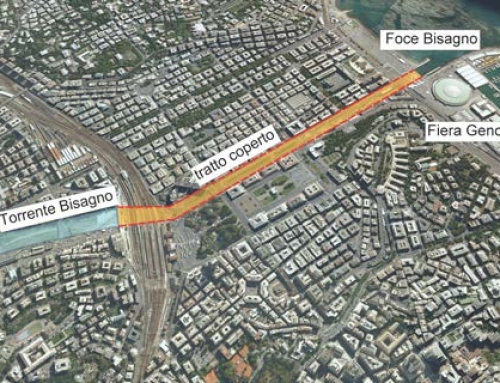M. Ferrari, M. Belicchi, D. Cerlini & U. Majone
Studio Maione Ingegneri Associati, Milano, Italy
S. Venturini & A. Marchi
Technital S.p.A., Verona, Italy
A. Galli & U. Galli
S.G.I. Studio Galli Ingegneria S.p.A., Padova, Italy
S. Pinasco
Comune di Genova, Genova, Italy
SUMMARY:In 2003 the District of Genoa entrusted us with the final design of important structural interventions and upgrading on the Bisagno River, in order to preserve the safety of urban areas in the city, which were often flooded. Given the position of the river from the geographical and urban/spatial standpoints, the flood events caused by the water overflow seriously impacted on both the environment and the residential areas nearby. According to the studies performed by local River Basin Authority, the Fereggiano, Rovare and Noce tributary streams were also involved in the risk of flooding of Genoa. Consequently, the River Authority planned a series of measures to minimize the risk of flooding. Among the main measures, a diversion tunnel was proposed to reduce the peak flow in the original river bed of Bisagno and side creeks.
The final project (2007) of the diversion included the following works: an intake system with a river barrage and a lateral spillway, a tunnel able to drain a portion of the discharge into the Tirreno sea, three vortex drops on the Fereggiano, Rovare and Noce streams connected to the main tunnel, a sea outfall structure and two access and maintenance tunnels.
The total length of the tunnel was 6650 m and the polycentric section had a diameter of 9.5 m. The minor tunnels from the drop shaft on Fereggiano creek, and Rovare and Noce streams had a length of about 300 m and a diameter of 5 m and 3.2 m, respectively. The infrastructure was designed with reference to a 200-year return period for a total capacity discharge
of 513 m3s-1.The estimated cost of the total works was 153 million Euro.
In order to check the hydraulic behavior of the major works, some tests were performed on physical models, with regard to the intake system, the three shaft drops, the junction between the main tunnel and minor one coming from the Fereggiano creek, and the work at the sea outfall.
In November 2011 the city of Genoa was hit by a devastating flooding event, causing several deaths and strong damages to infrastructures, buildings, private and public goods (total damages: approx 200 million Euro according to the legal report). The most disastrous effects were due to the flooding of Bisagno River and, especially, of Fereggiano creek.
In particular, the Fereggiano estimated peak flow was in the range of 140 m3s-1, corresponding to a discharge flow with an associated return period T larger than 200 years.
After this event, in 2013 the City of Genoa granted the first allotment contract that includes the safety measures for the Fereggiano creek and for the Rovare and Noce streams: among those, the Fereggiano tunnel to the sea outfall (diameter: 5.2 m; length: 3700 m) and the catchment works by the Rovare and Noce streams.
The design discharge is about 130 m3s-1, with an estimated cost of the total works of about 50 million Euro. Works will start within the end of 2014. In this communication, the general layout of the 2007 project will be firstly given; afterwards the 2013 revised project will be presented. In particular the main differences from the 2007 project will be highlighted, with a special focus on the Fereggiano vortex shaft.
KEYWORDS: Bisagno, Fereggiano, Diversion tunnel, Vortex shaft.








